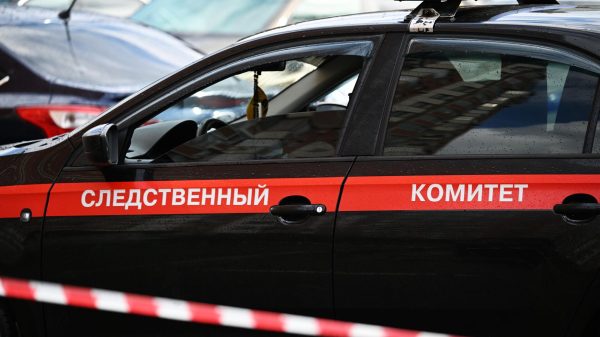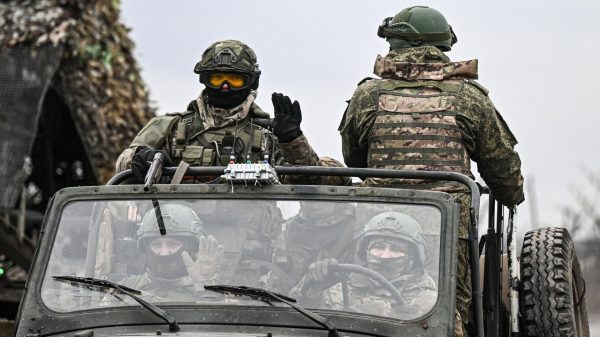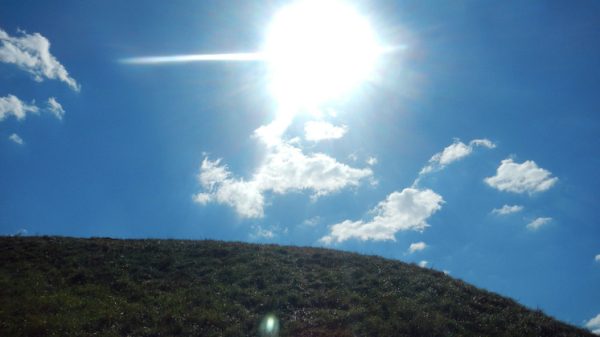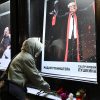In February 1921, newspapers in London began to publish stories about how military lorries in Ireland were carrying prisoners as hostages in the hope of deterring attacks by the IRA, the guerrilla army fighting British rule since 1919. Within a year, negotiations would lead to Irish independence and the campaign would be hailed as the first successful revolt against the British empire. But in the spring of 1921 the war appeared to be intensifying. Martial law had been imposed across the southern half of Ireland; if troops or police were shot, houses in the vicinity of the attack were demolished in reprisal.
Dublin had become as dangerous as the provinces: army lorries were ambushed with bombs and revolvers; crowds scattered when Black and Tans – demobilised soldiers recruited to the Irish police force who had gained a reputation for brutality – opened fire indiscriminately in city centre streets.
The Daily News, a persistent critic of the conduct of the war, condemned the policy of “Oriental repression” in Ireland.
In the House of Commons, Capt William Wedgwood Benn introduced a motion declaring that the government’s campaign to defeat the Irish independence movement had failed. Newspapers around the world were full of news from Ireland, he pointed out, in which the British were portrayed as the cruel persecutors of a people deserving of freedom.
As Benn spoke in the Commons, the prominent liberal journalist JL Hammond and his wife, Barbara, were travelling around Ireland to see for themselves. Barbara Hammond found conditions “simply appalling” while her husband was horrified that the attitude of the British government was to govern Ireland as if it were “Sierra Leone or Fiji”. The best description he had heard of his own government’s policy was from a French journalist, who told him that Britain was “trying to subdue a people as intelligent as any in Europe, by the means that European governments use for the correction of Berbers”.
The comparisons between Ireland and other colonial possessions were not fanciful. To many British politicians, the situation in Ireland was on a par with the postwar nationalist revolts they faced in Egypt and India. Irish revolutionary leaders themselves supported self-determination as a universal principle. But the unspoken assumption of the French journalist who impressed Hammond was crucial: the Irish merited better treatment than the Berbers fighting French and Spanish colonialists in North Africa because they were white.
Although the Irish revolutionaries worked to forge links with anti-colonial movements across the world, they were increasingly aware that proclaiming their whiteness was a clever card to play. The Irish representative at the peace conference in Versailles in 1919, Seán T O’Kelly, had been bitterly disappointed at his failure to secure a meeting with President Woodrow Wilson. “It seems,” he told an American journalist, “that the blacks and yellows, all colours and races, may be heard before the conference except the Irish.”
By May 1919, Erskine Childers, the former English officer and bestselling spy novelist, who had become Sinn Féin’s chief propagandist, was amplifying O’Kelly’s theme. In Paris, Childers pointed out in a letter to the Times, Britain had set about fixing new frontiers of nations the prime minister, David Lloyd George, had scarcely heard of, while failing to deal with Ireland. Was Ireland, Childers asked, to be “the last unliberated white community on the face of the globe?”
And a year later O’Kelly was still emphasising the point in a letter seeking an audience with Pope Benedict XV: Sinn Féin’s aim was “to obtain that independence which every other white race in the world has already won”.
The Irish republican leader Éamon de Valera had also taken this theme to the US on a fundraising tour from June 1919 to December 1920. De Valera travelled around America during an upsurge in racial violence in response to new challenges to segregation in the south and the beginning of the great black migration northwards.
Amid a revival of the Ku Klux Klan, a new generation of radical black leaders celebrated the military achievements of black soldiers on European battlefields. The experience of fighting in Europe, black sociologist WEB Du Bois wrote, had revolutionised their attitudes to confronting discrimination in the US. “A new, radical Negro spirit has been born in France, which leave us older radicals far behind. Thousands of young black men have offered their lives for the Lilies of France and they return ready to offer them again for the Sun-flowers of Afro-America.” The Harlem activist Hubert Harrison agreed that there was a growing awareness that “Negroes [were] awake” everywhere.
Black veterans were regularly attacked: several of the 78 black men lynched in the “red summer” of 1919 were wearing their army uniforms. Race riots erupted in 25 towns and cities, with more than 100 people killed. In Washington the streets were filled with soldiers. White rioters were led by marines in uniform; black men were beaten in the street on their way home from work and were took up arms to defend their homes from white mobs.
Another of the new black leaders, Marcus Garvey, had explicitly modelled his quest for black “self-determination” on Sinn Féin. In August 1920 he convened the first International Convention of the Negro Peoples of the World in Madison Square Garden in New York and read out a telegram he had sent to De Valera before 25,000 delegates. “We believe Ireland should be free even as Africa shall be free for the Negroes of the world.”
But De Valera made no mention of Ireland’s affinities with anti-colonial movements when he toured the American south in 1920. In Georgia, he shared a stage with veteran Confederate soldiers in their rebel uniforms; in Birmingham, Alabama, he wooed his audience by reminding them that Ireland “was the only white nation on earth still in the bonds of political slavery”.
The violence in the US played into a popular discussion among commentators on both sides of the Atlantic about how the world might be on the brink of a race war. The Harvard historian Lothrop Stoddard published a bestselling book, The Rising Tide of Color Against White World-Supremacy, which raised the spectre of “a pan-Coloured alliance for the universal overthrow of the white hegemony at a single stroke, a nightmare of race-war beside which the late struggle in Europe would seem the veriest child’s play”. White southerners in the US were confident that the rest of the “civilised” world would adopt segregation to manage the race question.
President Wilson had taken his white supremacist attitudes with him to Paris, where he worked closely with the South African statesman Jan Smuts to devise the mandate system for running colonies under the new League of Nations. The big powers would become guardians of peoples who, in the view of Smuts, would need “much nursing” before they could be considered candidates for independence. Self-determination was no longer a universal aspiration: instead it was reformulated to accommodate what the historian Adom Getachew has described as a regime of “racialised exclusion”.
The Republic: the Fight for Irish Independence 1918-1923 by Charles Townshend – review
Read more
Ireland’s representative O’Kelly had been wrong: the peace conference did not signal an advance in racial equality that disadvantaged Ireland. In March 1921, Du Bois wrote in his magazine the Crisis that although he endorsed the League of Nations it was still controlled by “imperial dictators”.
In the same issue he wrote that black Americans were uniquely placed to understand the news from Ireland. “The Irish resist… Their resistance is called crime… in retaliation not only the ‘guilty’ but the innocent among them are murdered and robbed and public property is burned by English guardians of the Peace!”
But Du Bois also noted how it must have caused the Irish some dismay to be treated in this way, given that they often sided with white supremacists in the US. “All this contains no word of argument against the ultimate freedom of Ireland – which God speedily grant! – but it does make us remember how in this world it is the Oppressed who have continually been used to cow and kill the Oppressed in the interest of the Universal Oppressor.”
Maurice Walsh is the author of Bitter Freedom: Ireland in a Revolutionary World 1918-1923 (Faber & Faber). He teaches history at Goldsmiths, University of London.






















































Свежие комментарии